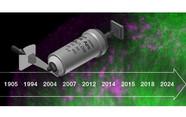Determination of Pesticides in Coffee with QuEChERS Extraction and Silica Gel SPE Cleanup

contributed by UCT |
Summary:
Coffee is one of the most widely consumed beverages in the world, partly due to the stimulating effect of its caffeine content. Like most crops, the application of pesticides in coffee cultivation is a common practice in order to increase production yields. To ensure food safety it is important to test pesticide residues in coffee. However, analysis of pesticides in coffee is challenging because it contains a large amount of caffeine as well as acidic and polyphenolic matrix components that are typically co-extracted with the analytes of interest. These matrix components are difficult to remove during sample extraction and cleanup which can cause complications during instrumental analysis. Caffeine, in particular, can significantly compromise GC analysis.
Log in or register to read this article in full and gain access to The Analytical Scientist’s entire content archive. It’s FREE!

















